(NLDO) - Bones of a Cretaceous monster were found in red gravel near Zhaoqing City, Guangdong Province, China.
According to Sci-News , the beast surprised paleontologists when it turned up in the Sanshui Basin in the northwest of the Pearl River Delta in South China, near Zhaoqing City in Guangdong Province, an area where vertebrate fossils are rarely found.
The discovery included only fragmentary bone fragments: vertebrae, forelimb bones, pelvis, femur and tibia.
However, the fossil fragments were enough for scientists to identify it as a previously unknown species of dinosaur.
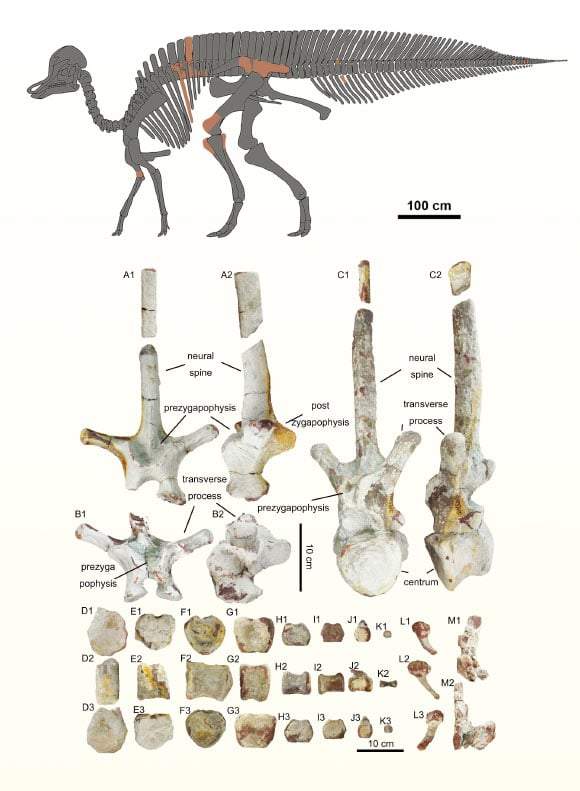
Sketch of the skeleton of the new plesiosaur species in Guangdong province and excavated fossil bones - Photo: HISTORICAL BIOLOGY
Writing in the scientific journal Historical Biology , the team led by paleontologist Donghao Wang from the China University of Geosciences said the beast was a member of the Hadrosauridae family (duck-billed dinosaurs).
It was a diverse, herbivorous, massive family of ornithischian dinosaurs that was found in many parts of the world, from North America, Europe to Asia.
A few months ago, another species of epaulette was found in Mexico with a more complete skeleton that was estimated to have been up to 8 meters long when alive.
The Guangdong-based Lambeosaur belongs to the genus Lambeosaurini.
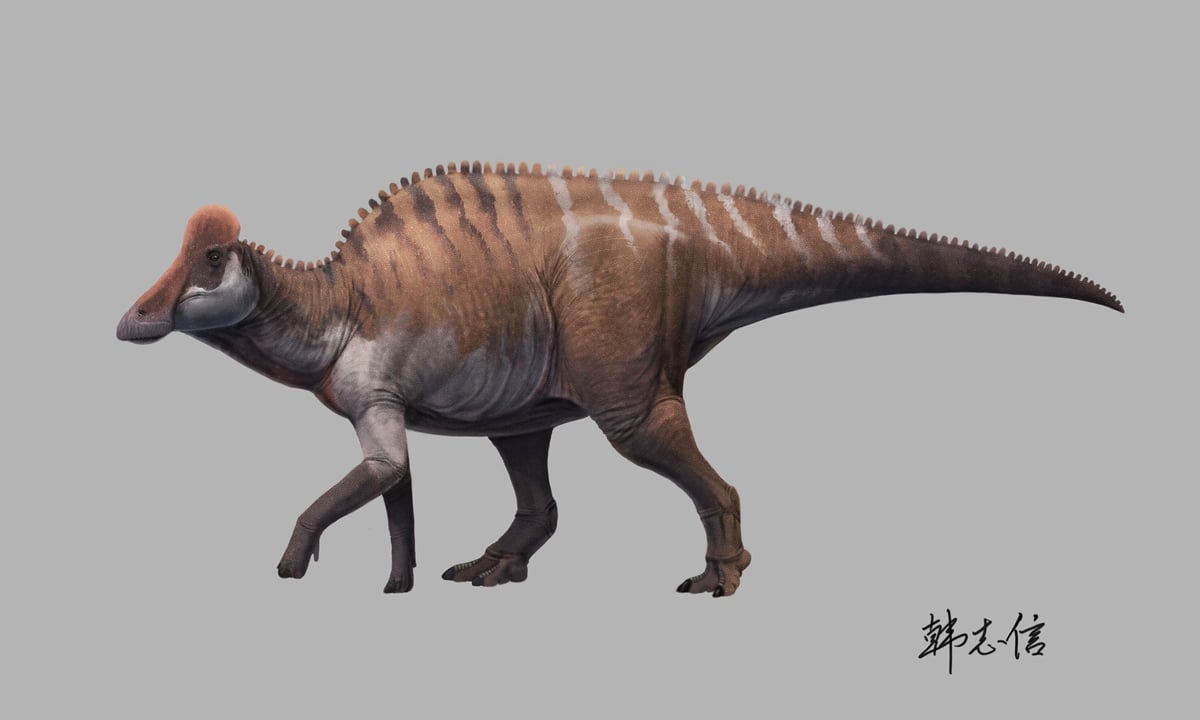
Graphic image depicting an ancient dragon - Photo: Han Zhixin
The most prominent feature of the Lambeosaurini group of placoderms is the hollow cranial crest, formed by paired premaxillae and nasal bones, which may have functioned in acoustic or visual signaling.
Four other species of Lambeosaurini have been discovered in China, but this is the first time a representative of the genus has been found in the south of the country.
Preliminary examination results show that the Guangdong monster could have lived as long as 70 million years ago, or at least 67 million years ago, at the end of the Cretaceous period.
Like all other dinosaurs, all Hadrosauridae, including this new, unnamed species, disappeared in the mass extinction 66 million years ago, triggered by the Chicxulub asteroid disaster.
Source: https://nld.com.vn/quai-thu-70-trieu-tuoi-lo-dien-o-quang-dong-loai-chua-tung-biet-19625021211121586.htm



![[Photo] General Secretary To Lam meets and expresses gratitude to Vietnam's Belarusian friends](https://vphoto.vietnam.vn/thumb/1200x675/vietnam/resource/IMAGE/2025/5/11/c515ee2054c54a87aa8a7cb520f2fa6e)
![[Photo] General Secretary To Lam arrives in Minsk, begins state visit to Belarus](https://vphoto.vietnam.vn/thumb/1200x675/vietnam/resource/IMAGE/2025/5/11/76602f587468437f8b5b7104495f444d)
![[Photo] General Secretary To Lam concludes visit to Russia, departs for Belarus](https://vphoto.vietnam.vn/thumb/1200x675/vietnam/resource/IMAGE/2025/5/11/0acf1081a95e4b1d9886c67fdafd95ed)



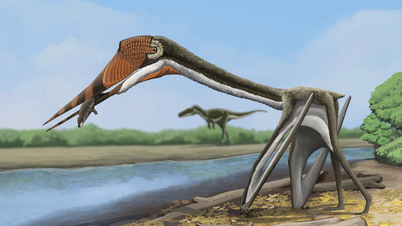


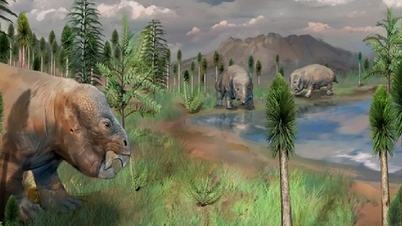
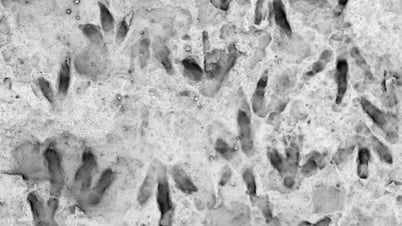






![[Video] Bringing environmental technology from the lab to life](https://vphoto.vietnam.vn/thumb/402x226/vietnam/resource/IMAGE/2025/5/11/57d930abeb6d4bfb93659e2cb6e22caf)
![[Video] Product risk classification: Solution to reform quality management, reduce burden for businesses](https://vphoto.vietnam.vn/thumb/402x226/vietnam/resource/IMAGE/2025/5/11/cbcd6b50805549a5bbb9e8e6354eda70)











![[Photo] National Assembly Chairman Tran Thanh Man attends the Party Congress of the Committee for Culture and Social Affairs](https://vphoto.vietnam.vn/thumb/1200x675/vietnam/resource/IMAGE/2025/5/11/f5ed02beb9404bca998a08b34ef255a6)
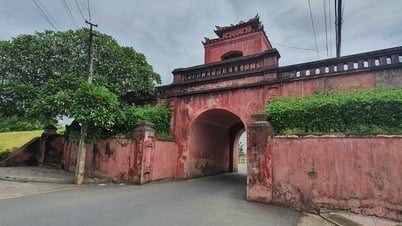






























































Comment (0)